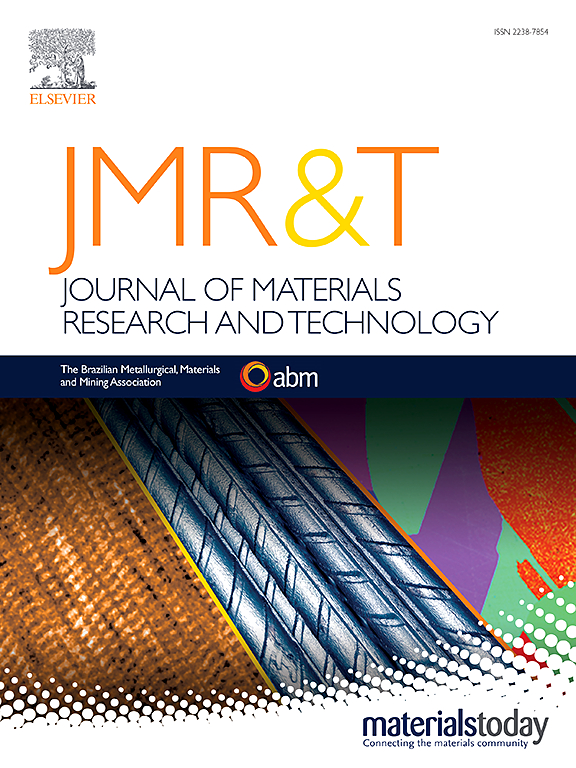Cooling rate control combined with refractory Mo and/or V addition to enhance the mechanical properties of CoCrFeMnNi alloy
IF 6.2
2区 材料科学
Q1 MATERIALS SCIENCE, MULTIDISCIPLINARY
Journal of Materials Research and Technology-Jmr&t
Pub Date : 2025-03-11
DOI:10.1016/j.jmrt.2025.03.074
引用次数: 0
Abstract
This work shows that optimum combination of cooling rate control and refractory Mo and/or V element addition to the CoCrFeMnNi (Cantor) HEA enables to develop novel high-strength hierarchical microstructures consisting of FCC, σ phase and finely dispersed precipitates. This has been achieved by casting CoCrFeMnNiV0.5, CoCrFeMnNiMo0.5 and CoCrFeMnNiV0.5Mo0.5 at. % HEAs at a cooling rate of ∼1000 K/s. Since this cooling rate is relatively fast, it enables to retain the Mo and/or V alloying elements in solid solution in the FCC phase. The phenomenon of solid solution hardening contributes to a decrease in the maximum indentation depth from 100 μm for CoCrFeMnNi, to ∼89 μm and ∼85 μm for the FCC and σ phases, respectively in the CoCrFeMnNiV0.5Mo0.5 at. % HEA. The novel microstructures additionally improve the wear resistance, particularly regarding the scratch hardness number, from Hs = 2.74 GPa for CoCrFeMnNi, to 4.19 GPa for CoCrFeMnNiV0.5, 4.78 GPa for CoCrFeMnNiMo0.5 and 6.85 GPa for CoCrFeMnNiMo0.5V0.5 thus making these alloys of potential interest for engineering components subjected to load and wear.
求助全文
约1分钟内获得全文
求助全文
来源期刊

Journal of Materials Research and Technology-Jmr&t
Materials Science-Metals and Alloys
CiteScore
8.80
自引率
9.40%
发文量
1877
审稿时长
35 days
期刊介绍:
The Journal of Materials Research and Technology is a publication of ABM - Brazilian Metallurgical, Materials and Mining Association - and publishes four issues per year also with a free version online (www.jmrt.com.br). The journal provides an international medium for the publication of theoretical and experimental studies related to Metallurgy, Materials and Minerals research and technology. Appropriate submissions to the Journal of Materials Research and Technology should include scientific and/or engineering factors which affect processes and products in the Metallurgy, Materials and Mining areas.
 求助内容:
求助内容: 应助结果提醒方式:
应助结果提醒方式:


